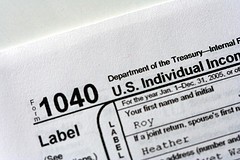What is a Qualified Dividend
Post on: 26 Июнь, 2015 No Comment

For dividend investors, tax time means that its time to figure out whether or not they are dealing with qualified dividends. This is an important distinction because you have the opportunity to pay much lower taxes on qualified dividends. Right now, and until the end of 2012 (unless Congress changes things), qualified dividends are taxed at the current capital gains rate, which is capped at 15%. If you are in a higher tax bracket. being able to pay a capital gains rate on your dividend income can potentially save you hundreds or even thousands of dollars in taxes.
So how do you know if what youre getting is a qualified dividend or an ordinary one?
What Makes a Dividend Qualified?
All dividends are considered ordinary. However, those that arent qualified are taxed as regular income. Its in your best interest to ensure that your qualified dividends are recognized as such, and taxed accordingly.
According to the IRS, you must have held the stock for more than 60 days during the 121-day period that begins 60 days before the ex-dividend date. This means that you need to look at the ex-dividend date, and then go back about two months. You must have held the stock for at least 60 days during the slightly more than four months previous to that. You cant just purchase shares of a dividend paying stock a few days before the ex-dividend date, and then count the earnings as qualified.
When it comes to preferred stock, there are even more requirements from the IRS: [Y]ou must have held the stock more than 90 days during the 181-day period that begins 90 days before the ex-dividend date if the dividends are due to periods totaling more than 366 days.
Before you decide to consider dividend income as qualified, make sure that you double check how long you have held the stock, and ensure that you understand when the ex-dividend date is. This is all information that is made publicly available. You can also consult a knowledgeable tax professional to help you determine which of your dividends count as qualified.
Understand that if you use a DRIP to reinvest your dividends. you still have to pay taxes on what you were paid, even though you didnt receive the cash directly. The exception is if the reinvested dividends are held in a tax-advantaged retirement account.
Dividend Income & Your Tax Return
When you earn money in dividends, it will be reported to you. If you are paid more than $10 in dividends from a source, you will be sent a 1099-DIV. Corporations, mutual fund companies and brokers send these out annually so that you can see what income you have from dividends.
You will find your total dividends received in Box 1a. In Box 1b, you will see the amount that qualifies for the capital gains tax instead of being taxed as ordinary income. Finally, Box 3 offers non-dividend distributions, which are considered a non-taxable return of capital. When filling out your tax return, you will use those boxes to fill in the appropriate lines on your Form 1040.
If you have earned more than $1,500 in dividends during the year, you will need to complete a Schedule B, which will help you organize your dividend earnings from multiple sources.














